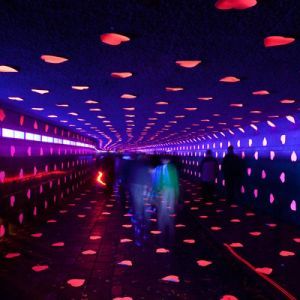Willem Besselink & Guus Vreeburg (Het Plafond)
Het Plafond is a space for the arts and culture in the apartment of Willem Besselink (visual artist) and Guus Vreeburg (art historian), located at Gedempte Zalmhaven in the centre of Rotterdam / The Netherlands.
Het Plafond exists since the Spring of 1997 – when the apartment building was quite new. It's is a space for artists to do special projects – a program for planned or coincidental visits.
Marijke Appelman
Marijke Appelman works in all media to explore and reflect on our constant commutation between culture and nature. Time-sharing a studio with artist Karin Arink forms the basis for a practice that takes place in life more than the artists studio. Her series Objets Trouvés give a subtle insight to the nature she finds in the studio and her temporary working spaces. http://marijkeappelman.nl/objets-trouves
Marijke Appelman (Haarlem, 1979) finished her BA in Fine Art at Willem de Kooning academy in Rotterdam in 2008 and studied at Piet Zwart Institute's MA in Media Design in 2009 and participated in residency programs in Austria, Norway, The Netherlands, Iceland, Denmark and Belgium. Besides self imposed projects on art & theory, curating and Mail Art she has exhibited at various places in the world and teaches at The Royal Academy of Art in The Hague and at the Willem de Kooning academy in Rotterdam.
Hans Wilschut
Hans Wilschut’s work originates from the urban world. His photographs are lyric reflections on the increasingly built-up surroundings. An underlying social theme can often be found in his photographic work.
Wilschut searches the boundaries between public and private domain at the frayed edges of cities for places where changes merge and manifest. Using a personal approach, he attempts to highlight themes including socio-cultural metamorphoses, the increase in tourism, the shift in world economies and demographic growth in portraits that stand alone. Wilschut translates the language of aesthetics, incorporating it in an underlying layer and challenging viewers to look and sharpen their gaze. His images do not criticize; instead, more than anything they show what only the photographic eye can see. Photo Hans Wilschut
Dre Wapenaar
Studio Dré Wapenaar works at the interface of architecture, design and sculpture. Sculpture is the base. Working with sculptures, presented in a three-dimensional context, is dealing with people circling the work and being confronted with it. In working with tents and pavilions this movement is enlarged towards people turning and twisting around each other as well. This can be seen as a result of the quest to find out how groups of people and individuals relate. Tents, with the universal language they speak, are an excellent means to understand at least something of the chemistry between people. Tentvillage-Revisited ⓒ Dré Wapenaar 2007 perspective view ⓒ Photo Ine Lamers
Arianne van der Gaag
Arianne van der Gaag studied at the Art Academy in Utrecht (NL). She moved to Rotterdam and started working as a designer of jewelry, objects and furniture.
Her work has been shown in galleries and musea (like Lilly Zeligman Gallery in Laren and Kunsthal Rotterdam). Also, her works are in the collections of musea (including the Museum of Modern Art in Arnhem), private individuals and collectors. The intersection of art and design is her domain.
Charlotte Schleiffert
Charlotte Schleiffert was born in 1967 in Tilburg, The Netherlands. She lives and works in Rotterdam (NL) and in Xiamen (China). Life-size figures in her drawings and paintings are fertile soil for Charlotte Schleiffert’s fantasy, based on power and suppression. Besides the fact that passionate women are central in her work, she feels committed to the social and political movements of our global society in general.
Her work is both raw and sensual, direct without hypocrisy. It is suggestive, balancing between abstract compositions and figurative forms. The broad combination of media treatment (oil, acrylic, egg tempera, pastel foil, tissue ….), the violent coloration and contrasting compilations underwrite Schleiffert’s authentic contribution to contemporary painting. (text Walter Geys)
Roeland Otten
Roeland Otten recently graduated at the master course Studio for Immediate Spaces (Sandberg Institute), where he researched the relations between people, things and spaces to expand his practice with more theoretical and architectonic experiences. He works with a conceptual approach in different fields of art, design and architecture. About the depicted work: 1 Minute video performance in collaboration with Alonso Vazquez, documented by Nicolo Scatola. Performed in Amstelveen, for 'Blanc Spaces', a project of Studio for Immediate Spaces at Sandberg Institute, Amsterdam. Screened at Lost and Found, Amsterdam.
Otten also teaches, and works as dj 'Afrobot'. His partner in life is illustrator Gemma Plum. They work and live with 2 sons in one of the nicest streets of Rotterdam.
Lizan Freijsen
Lizan Freijsen is an engaged observer, interested in the way we deal with the world and what her proper place is. She works on a human scale and uses photographs, textile and paper. Her hallmark: stains.
Her fascination for stains started long ago. “From my strategic position in the top bunk bed, I studied the stains on movement and colour. When I continued to stare correctly I saw life and a personal world in every deviating stain on the wall. Stains are images created by nature; I regard them as objets trouvés. There are stories in the stains found in architecture. They tell you about the neighbours, about the material the ceiling is made of, and about time because they become darker and more intriguing when the leakage repeats itself.”
Besides her work as an artist/designer, Lizan teaches at the Rotterdam Art Academy Willem de Kooning.
Rianne Makkink & Jurgen Bey
Studio Makkink & Bey is led by architect Rianne Makkink and designer Jurgen Bey. The studio works in various domains of applied art and includes public space projects, product design, architecture, exhibition design and applied arts. Supported by a design team, they have been operating their design practice since 2002.
The ambition of Studio Makkink & Bey is to see the role of the designer expanded to the most strategic function possible. To this end, our design team includes professionals from many different fields of knowledge; forming alliances with other designers, architects and experts. Urban planning, architecture, landscape architecture are indissolubly bound to product design. The light bulb has had an influence on architecture, the way a house is built will inevitably influence its interior. Did the invention of elevators give rise to the skyscraper, or did high-risers necessitate elevators? Photo Makkink & Bey
Rolf Engelen
The eclecticism of Rolf Engelen's work makes it difficult to capture in a word. He operates in the public space, in project-based contexts as well as on commission, and he is involved in several collaborative ventures in the domains of social sculpture and language. He was a co-founder of the world's smallest museum, Museum Van Nagsael (1995-2006), and initiator of the 'Second-Chance Plant Company', which has been saving plants dumped on the street since 1997. The act of giving is a cornerstone of his work. In his autonomous work, primarily objects and drawings, Engelen transforms familiar images or visual concepts in such a manner that it is as if we are seeing them anew.
For this edition of Wake up in Art, Rolf Engelen works on a special situation in which he will focus on language. He worked with language before, for example in De Dichtkunstkrant (dode dieren) and for SKOR: DRUK DRUK DRUG (with Jeanne van Heeswijk)
Robin Kolleman
Rotterdam based artist Robin Kolleman (Dwingeloo, 1960) graduated in 1988 at the Art-academy of Rotterdam, mixed media and sculpture and won the prize for best student of the year. Her installations, video’s and sculptures were shown in The Netherlands, Belgium, Italy, Spain, Germany, France, Japan and Turkey. Her work is part of several Public and private collections. For fourteen years she collaborates as member of Foundation B.a.d Rotterdam and she participates in projects with Sin è Angelo, a Belgian/Moroccan based art initiative.
In addition to her work as an artist, she also worked as a freelance curator for several spaces. In 2011 she founded her own Foundation ToonZaal.
Mette Sterre
Mette Sterre is a recent MA graduate from Central Saint Martins London. Her work deals with the grotesque: the world of topsy-turvy, the uncanny and the paradox. Inspired by the repetitive patterns in nature, sociology and cultural history in the field of horror movies, she's currently focusing on the grotesque body. By the de-identification of the human body, she questions the stigmatisation of difference and the social construction of identity by blurring the boundaries between the inanimate and the animate, gender and object and subject. She does this by creating sculptural costumes, giving birth to new forms of living beings.
The costumes of these anti-characters are made of unusual materials like ceramics, rubber bands or animal prosthetics. She brings sculptures to life in a performance where mise-en-scene plays an important role to support their context and loose narratives. She has exhibited at the Trienale Museum in Milan, The Watermill Center in New York and Scope Art Basel (among others).
Nicole Driessens & Ivo van den Baar (WANDSCHAPPEN)
Nicole Driessens and Ivo van den Baar = WANDSCHAPPEN. These visual artists love to balance between art and design. They use a very specific imagery that makes use of its surroundings. Handicraft plays an important role, they are skillfull with different materials like felt, textile, paper and epoxy resin. Natural forms are used for inspiration and translated to a new context. The process of development of an artwork or product is equally important to them as the outcome.
WANDSCHAPPEN is known for their “Feltplants” . These object were not designed to replace our real plants, but to show the process of people settling down in the migration neighbourhood of Rotterdam Charlois, where the artists live and work.
Daan den Houter
Den Houter brings multiple, contradictory subjects together in the same single work. Resulting into pieces that are in conflict with themselves. Triggering the discussion about their own existence and the viewers opinion. Using humour and cynicism he creates another perspective on the matter of art and on one's own assumptions towards our daily life surroundings.
Karin Arink
Karin Arink is an artist working both in image and in text. Media include installation, textiles, ceramics, photography, (text) animation. She was born in Delft (NL), lived as a child a few years in Boston Massachusetts, as a teenager in London, did an exchange to Frankfurt-am-Main and moved for a year to Kitakyushu Japan. She studied in Rotterdam and at the Rijksakademie Amsterdam, and won 1st Prize Prix de Rome Sculpture in 1992.
Karin Arink exhibits extensively both in Holland and abroad, e.g. in Stedelijk Museum Schiedam, Van Abbemuseum, Centraal Museum Utrecht, Museum Boijmans van Beuningen, Kasteel Oud-Rekem, Gerhard Marcks Haus Bremen, Museo Pecci and Stichting De Pont Tilburg. She also writes and collaborates a.o. as member of Foundation B.a.d Rotterdam. Lecturer and Course Leader at the Willem de Kooning Academy Rotterdam BAs Fine Art and Photography.
Kuin Heuff
If art can be created by construction, partial demolition and reconstruction, using a carrousel of decisions, Kuin Heuff goes beyond this: she puts the knife in an apparently completed work. Kuin Heuff (Dordrecht, 1969) added a dimension to her painted works by adding air and space in her paintings. Although Heuff is primarily regarded as a painter, the main theme that characterizes her work is another, more philosophical one. It's about creating an image and removing part of the image untill a core remains. A core image in which both sides of that process come together: appear and disappear.
Monique Benthin
From a distance the art of Monique Benthin appears inviting: for instance, butterfly houses with old photographs in sepia tones, combined with sophisticated fabrics and colourful pigments, or assemblages of soft materials such as lace and fur. From closer up, they confront the viewer with grotesque scenes. At the same time, the bizarre combinations of images make the work comic.
In her images Monique Benthin deliberately seeks out contradictions, something which is a direct result of her past as a ballerina. The competitive bent that she developed there contrasted sharply with life in the 'outside world'. It is in part because of this experience that as an artist she now creates images so full of contrasts.
Kamiel Verschuren
Kamiel Verschuren is a conceptual interdisciplinary artist, working in a broad international practice with a special interest for the public domain in different positions; as drawer, (spatial) designer, designer of public space, organiser, initiator, social activist, observer, urban advisor, landscape architect, producer and publicist; co-founder of artist initiative foundation B.a.d (1989), Studio Pompstraat, Studio NL 01.08.04 (2004), Stedelinks010 foundation (2011), international project organisation ICUartprojects, member of the advisory board of TENT./CBK Rotterdam (2004), self-management organisation NAC foundation (2004) and board member of Freehouse (2011-2013).
He works individually and in collaboration with other artists and organization. Abroad he is active in several long term collaborations with FSKE-Studio Galeria, S-Air, La Source du Lion and Doual’art; in Budapest (2002-2005), Sapporo (since 2004), Casablanca (2003-2006) and Douala (since 2007).
Inge Aanstoot
Inge Aanstoot is a painter who is inspired by classical tales and themes. She is interested in symbolism, storytelling and the human skill to associate. Aanstoot is fascinated by the various interpretations of symbols and situations by people, as well as the endless amount of visual images that people choose to surround themselves with.
She is currently examining differences in natural and cultural behaviour. Also, she experiments with new formats; canvasses both bigger and smaller than she used to work with. Aanstoot's work is presented by galery Jaap Sleper.
Sander Bokkinga
Sander Bokkinga was born in 1971 in Stokkum (Twente) He was educated as an architect (TU Delft) and works as ‘Artitectus Universalis’: Nonconformist by choice, connected to contemporary society yet always inclined to investigate and push boundaries.
Sander Bokkinga’s work relates directly to this quest of physical and spiritual freedom. Trained as an Architect, his quest for freedom defines the space on the edge of reality and imagination. His work relates to the non-descript desire of citizens to break free from rules and conventions in a tactile and positive manner. His art is an infusion of joy, freedom and interaction.
Floris Visser
Floris Visser (1985). - Tame the dissonant spread of Reason. Create time and space for empirical self-experimentation. Investigate the pluralism of the simple and explore makeshift situations. Construct new sideways for our systems, not as a formalist roadmap to predictable results, but as a situationist derivé instead. Surrender to the uncertainty of the floodplains. Life is a small adventure without apparent use.
Hester Scheurwater
Hester Scheurwater (1971) studied monumental art at the Royal Academy of Fine Arts in The Hague. Under the guise of self-portraits, she investigates and critiques the role of women as a sex object. Photographs of herself posing before a mirror reflects both Scheurwater's inner thoughts and outward appearance. "The mirrored self-images are my way of reacting on the imitated and fake media images, which are constantly calling upon our imagination, without intending to be taken too seriously, " she explains. " I try to deconstruct this call's effect with my reactions by switching the 'subject-object' relationship, without being victimised by it." Scheurwater's work is well known for its sexual explicitness. Scheurwater also teaches video art at the Royal Academy of Fine Arts in The Hague.
Studio VOLLAERSZWART
Madje Vollaers and Pascal Zwart started Studio VZ in 1991 as a design studio for interdisciplinary design and visual communication. VOLLAERSZWART explores the interaction between various disciplines such as architecture, sculpture, couture, culture and communication in public space. VOLLAERSZWART has realized various projects in the fields of art and design. It is at the intersection of these disciplines that the ideal situation is created for new visual scenarios to be developed. In the last 20 years VOLLAERSZWART have become established as designers for exhibitions and festivals with their haute sculpture approach to city dressing, exhibition design, public artworks, eye catchers and scenery.
Jeroen Kuster
Jeroen Kuster (1971) studied at the Art Academy in Enschede (AKI). He has been fascinated by animals all his life. He is especially interested in the way animals are constructed. Over the years he gained knowledge about structures and anatomy of animals, and learned how to (de)construct an animal. By using this knowledge and his extensive fantasy, he designs new organisms.
He uses plastic and other anorganic materials for his organisms. They get Latin names, and are presented like the treasures of a natural history museum. Kuster likes to force us to think about the meaning and significance of the animal world. The natural meets the artificial in the mysterious works of Jeroen Kuster.
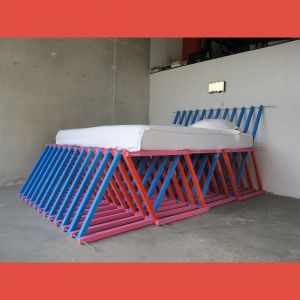
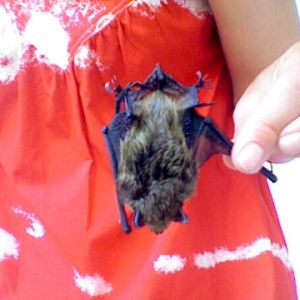
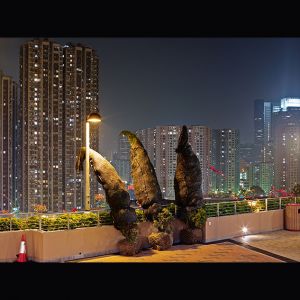
dre wapenaar TVR perspective view 16627 kopie_thumb.jpg)
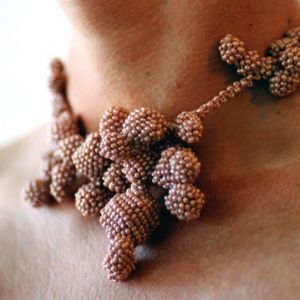
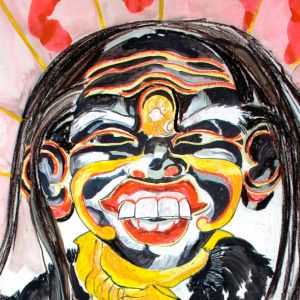
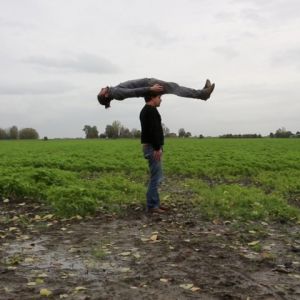
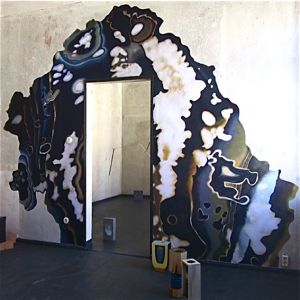
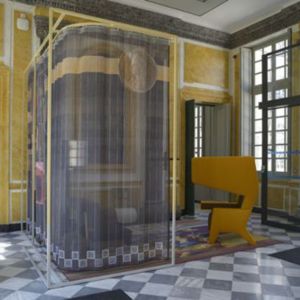
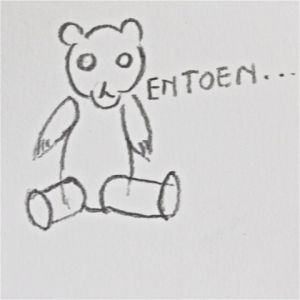
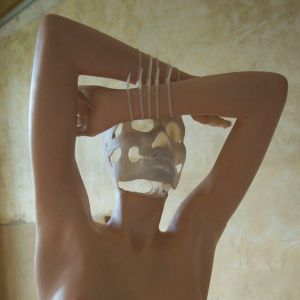
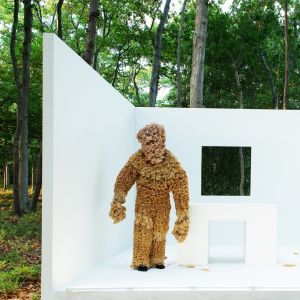
RoyalBouquet10a_thumb.jpg)
daan den houter vierkant_thumb.jpg)
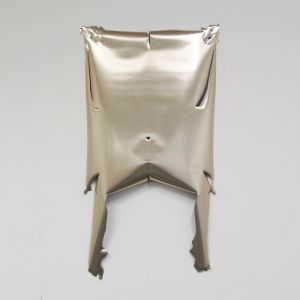
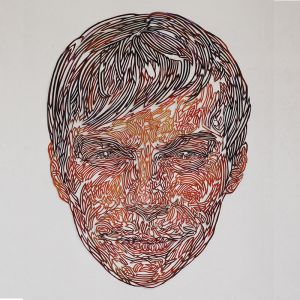
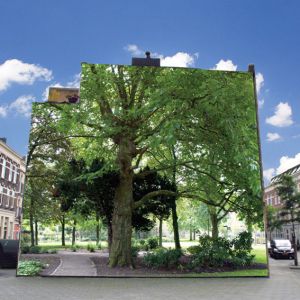
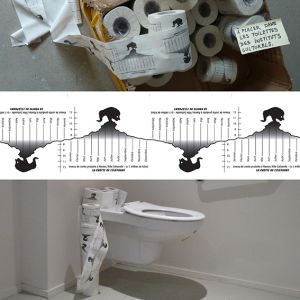
inge-aanstoot-wilhelmscream vierkant_thumb.jpg)
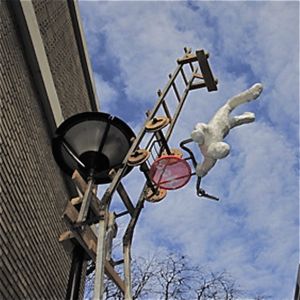
Floris 2 vierkant_thumb.jpg)
hestervierkanteer_thumb.jpg)
